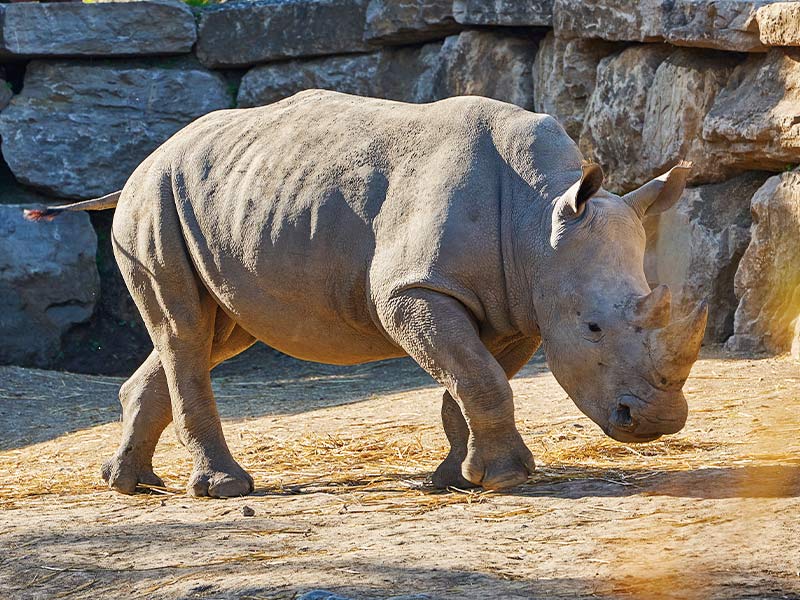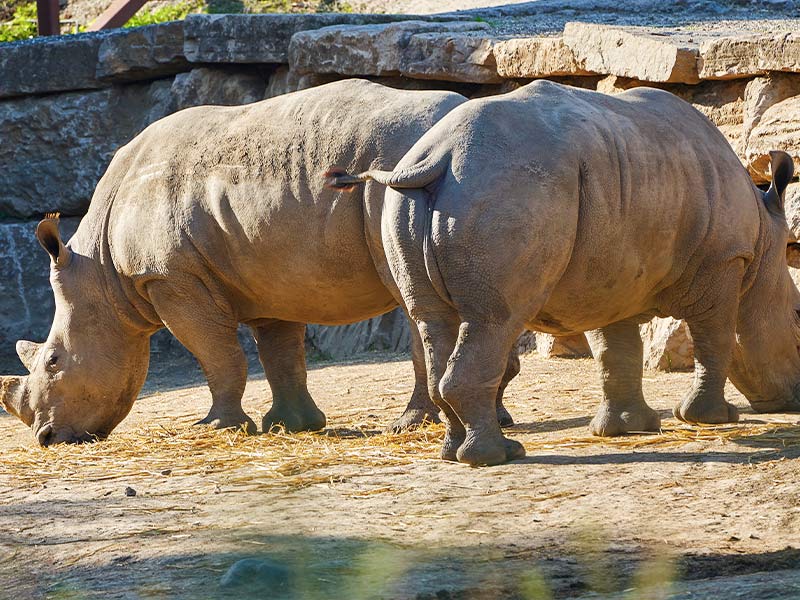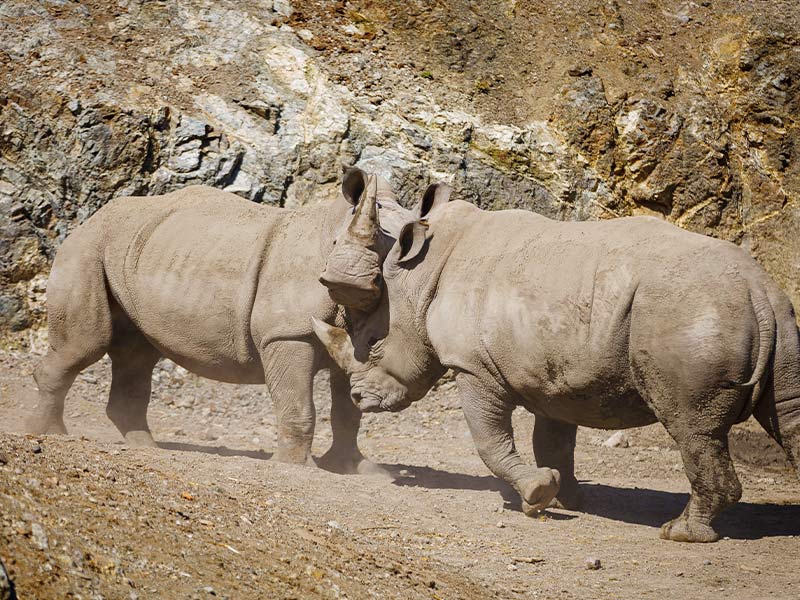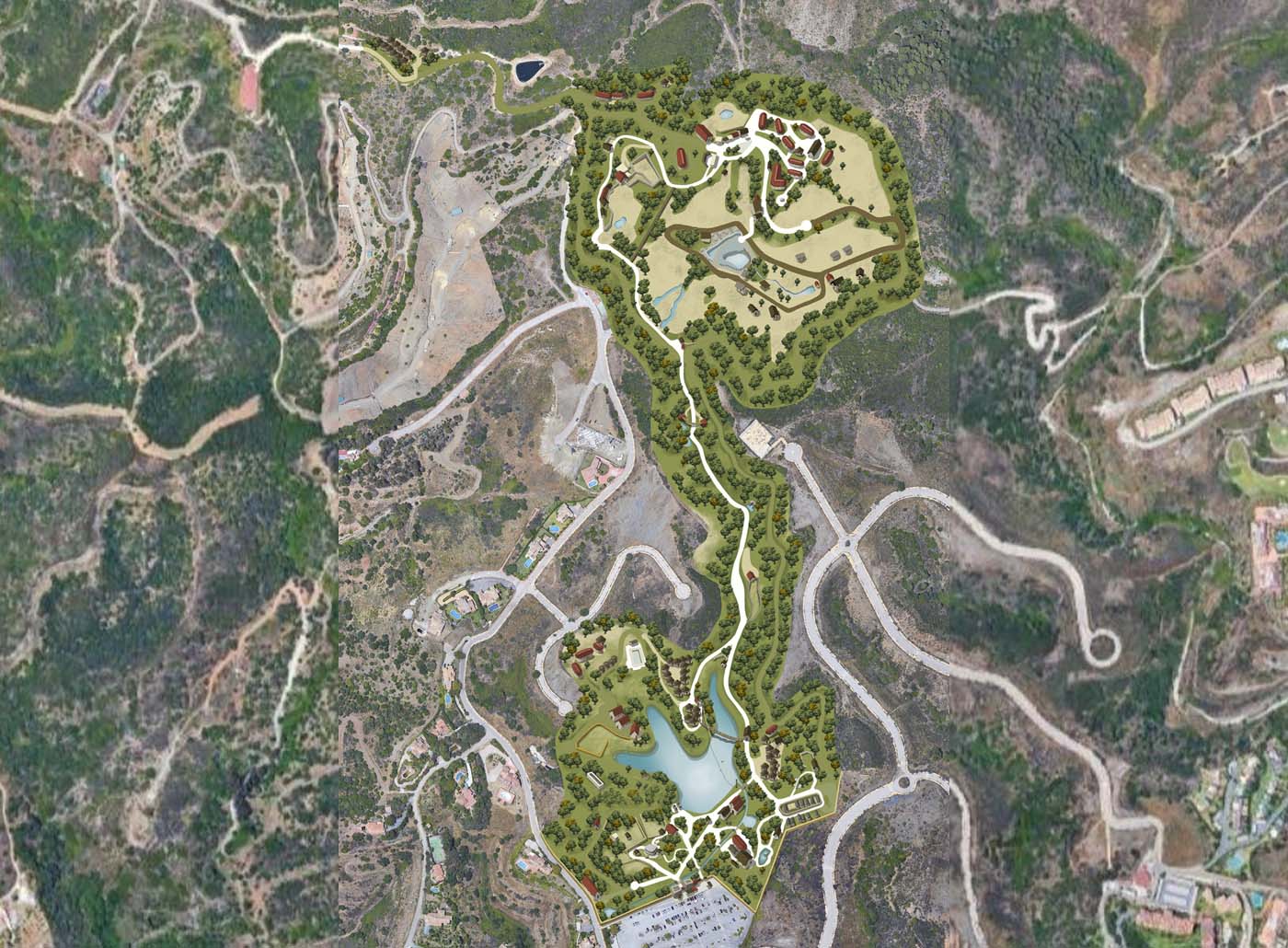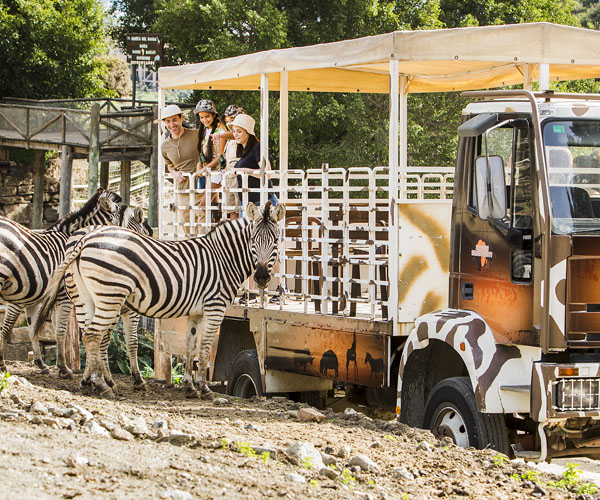The typical habitat of the white rhinoceros includes dense forests, savannahs and woodlands with grassy openings near water sources.
It is the second largest animal on the African continent after the elephant. Its name derives from the Afrikaans word "wyt" which means "wide" and does not refer to the animal's color, but to its wide lips and square-shaped mouth for grazing. Every day it eats approximately 30 kg of vegetation.
Both males and females have multiple sexual partners and their breeding interval is 2.5 to 3 years due to the long gestational period of 530 to 550 days.
Their average life expectancy in the wild is 46 to 50 years, however, most rhinos die unnaturally due to poaching for their horn, which is used for medicines that have no scientific validity. This is the main threat it faces.
The white rhino does not have a good sense of sight, but it does have a good sense of hearing and smell. Scent communications play an important role in securing their territory, the dominant male sprays his urine to mark the boundaries of his territory and they also have communal dung heaps, which makes it easier for rhinos to identify each other in an area.
Selwo Aventura's white rhino group is part of the European Endangered Species Program (EEP) of the European Association of Zoos and Aquaria (EAZA).
